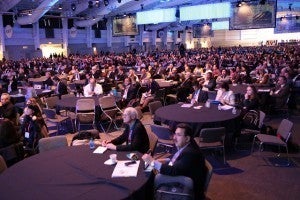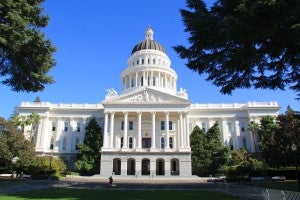 The natural gas industry group Our Nation’s Energy (ONE) Future Coalition released a paper yesterday applying their own set of assumptions to an earlier analysis commissioned by EDF, which had shown that oil and gas methane emissions can be dramatically reduced for about a penny per thousand cubic feet of gas sold. Both analyses were carried out by ICF International.
The natural gas industry group Our Nation’s Energy (ONE) Future Coalition released a paper yesterday applying their own set of assumptions to an earlier analysis commissioned by EDF, which had shown that oil and gas methane emissions can be dramatically reduced for about a penny per thousand cubic feet of gas sold. Both analyses were carried out by ICF International.
We always welcome new points of view, but it’s important to note the new calculations change key variables in ways that boost the cost of reducing methane emissions while significantly understating benefits of these reductions. An even bigger problem comes when others in the industry public relations machine start to mischaracterize the study.
Despite these changes, the results still end up making what we think is a strong case for sensible regulatory standards to make sure that best practices become the standard practice industry-wide in order to reduce the oil and gas industry’s nearly 10 million metric tons of yearly methane emissions.
Even Slanted Figures Underscore Need for Rules Read More










 Throughout the United States, utilities earn a profit through a tried and true regulatory model that has worked well for over 100 years. This model was built on the assumption that customers would use ever increasing amounts of electricity, and it worked for some time. But, as the need to save power and make electric systems more efficient becomes essential to adapt to climate change, this and other assumptions no longer hold true. Without changing how utilities are compensated, we run the risk of experiencing a true irony: utilities, the cradles from which our modern civilization rose, may become the chains preventing us from advancing toward a clean energy future.
Throughout the United States, utilities earn a profit through a tried and true regulatory model that has worked well for over 100 years. This model was built on the assumption that customers would use ever increasing amounts of electricity, and it worked for some time. But, as the need to save power and make electric systems more efficient becomes essential to adapt to climate change, this and other assumptions no longer hold true. Without changing how utilities are compensated, we run the risk of experiencing a true irony: utilities, the cradles from which our modern civilization rose, may become the chains preventing us from advancing toward a clean energy future. We know we need massive decreases in greenhouse gas emissions by 2050 if
We know we need massive decreases in greenhouse gas emissions by 2050 if 
 As the days are getting longer and the weather is warming up, kids across the country are counting down the days until summer vacation. California state lawmakers, on the other hand, are rolling up their sleeves and building upon California’s strong foundation of clean energy leadership and momentum. With the electricity sector responsible for
As the days are getting longer and the weather is warming up, kids across the country are counting down the days until summer vacation. California state lawmakers, on the other hand, are rolling up their sleeves and building upon California’s strong foundation of clean energy leadership and momentum. With the electricity sector responsible for 